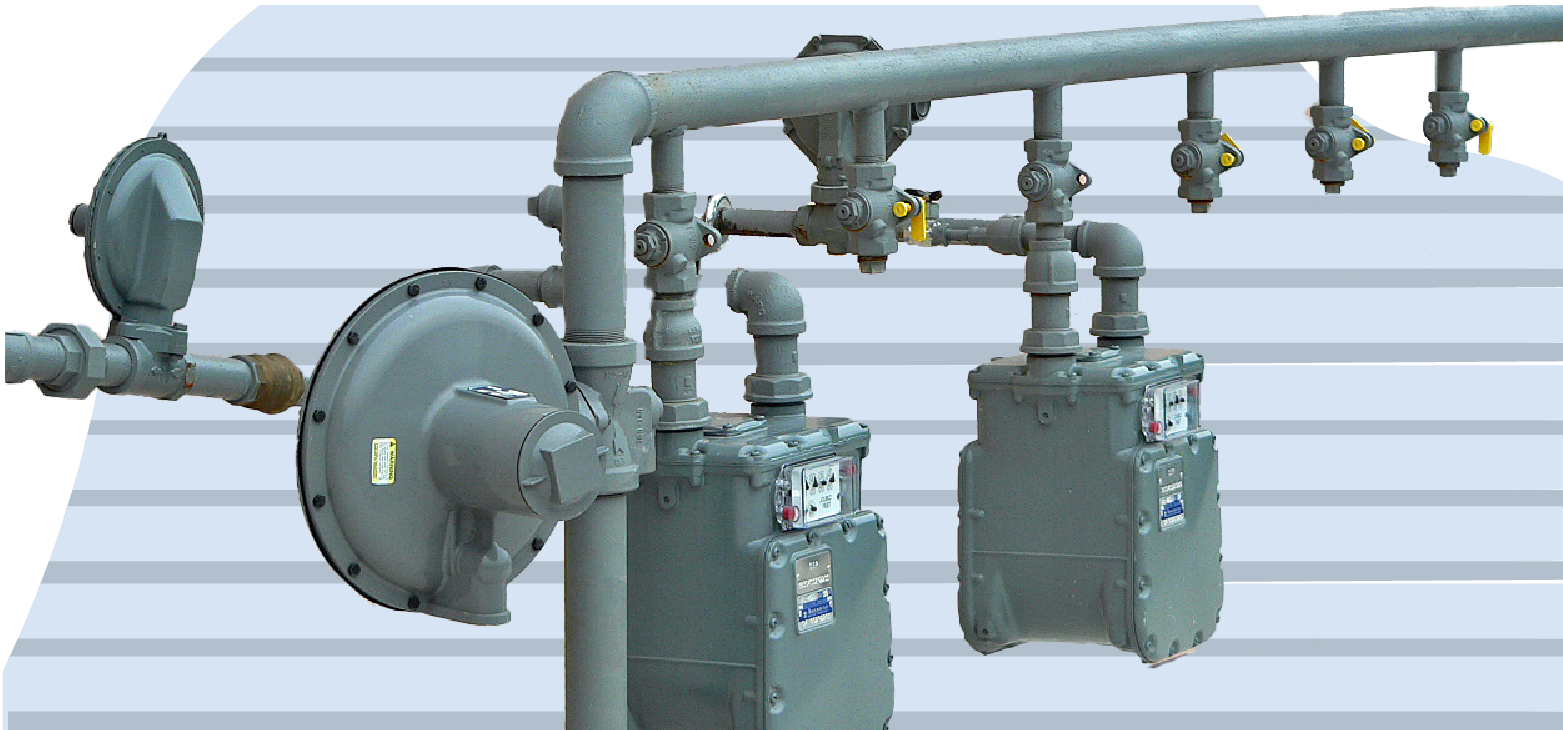Natural Gas Cost Per Therm: How Natural Gas Pricing Works
by Tyler Castle
16.7 min read

When it comes to keeping your home warm, running gas appliances, or managing your overall energy costs, natural gas plays a bigger role than most people realize. But how much do you really know about what you’re paying for?
Understanding the cost per therm and how natural gas pricing works isn’t just about reading your bill. It’s about knowing why prices rise or fall, what you’re actually being charged for, and how you can make smarter choices to save money.
Whether you’re comparing energy suppliers, deciding between plan options, or simply trying to avoid surprise spikes in your monthly bill, having a basic grasp of natural gas pricing empowers you to take control. Instead of guessing which plan might be best, you’ll have the confidence to choose the one that matches your budget and your usage habits.
In this guide, we’ll break down everything you need to know, from how natural gas is priced to strategies for managing your costs so you can make informed decisions that protect your home and wallet.
What is Natural Gas?
Natural gas is a type of fossil fuel that we use every day to heat our homes, cook our food, and even make electricity. The main ingredient in natural gas is methane, a simple gas made of one carbon and four hydrogen atoms (CH₄). It also contains small amounts of other gases, like propane, butane, carbon dioxide, and even a bit of water vapor.
Natural gas is trapped deep underground in different types of rock formations. Sometimes it collects in big pockets between rock layers—this is called conventional natural gas. Other times, it’s spread out in tiny spaces inside rock, like shale or sandstone. That’s known as shale gas or tight gas, and it’s often called unconventional natural gas.
When natural gas is first pulled from the ground, it’s called wet gas because it contains more than just methane—it also has other gases (like ethane and propane) and things like water vapor, carbon dioxide, and sometimes sulfur.
Understanding Natural Gas Measurements (Ccf, Mcf, BTU, and Therms)
Natural gas is first measured by volume before being converted to energy units. Many utilities measure your usage in Ccf or Mcf but convert it to therms to show you how much energy you actually consumed. Since natural gas varies in energy content, they multiply the volume by a “conversion factor” to get therms.
Here’s a breakdown of how the units of measurement for gas stack up:
BTU (British Thermal Unit)
A BTU is a very small unit of heat and is most commonly the amount of heat needed to raise the temperature of 1 pound of water by 1°F. Gas appliances (like furnaces or water heaters) use thousands or even millions of BTUs. Most of the time, the measurements are grouped into therms or MMBtus for convenience.
Therm
A therm is used to measure to measure natural gas, representing the amount of heat required to raise the temperature of water by a certain amount to make gas. While some utility bills list usage in therms, many providers—especially in states like Illinois, Ohio and Pennsylvania use Ccf (hundred cubic feet) or Mcf (thousand cubic feet). One therm of heat equals 100,000 BTUs and it’s also equal to 0.10 MMBtu (which is one-tenth of a million BTUs)
MMBtu
A MMBtu stands for “Million British Thermal Units,”( BTUs) . Standard measure of the heat content in natural gas. Gas rates at the national level (like those reported by the EIA – (U.S. Energy Information Administration) are often in dollars per MMBtu or per Mcf. 1 MMBtu equals 10 therms and MMBtu’s are used more in industrial or wholesale gas pricing for buildings that use a ton of natural gas at once.
A MMBtu is also commonly referred to as a dekatherm (Dth). One dekatherm equals 10 therms, which is a unit more familiar to residential consumers.
Ccf
Ccf represents a volume of 100 cubic feet of natural gas, and it’s commonly used by utility companies when billing residential and small commercial customers. Because natural gas is a gas and not a liquid, it’s measured by volume under standard conditions of pressure and temperature.
MCF
MCF’s represent 1,000 cubic feet of natural gas and is often used in wholesale transactions, industrial billing, or utility supply contracts. While Mcf measures the same type of gas and volume as Ccf, it’s used in larger-scale contexts where higher volumes are involved.
How Much Does Natural Gas Cost Per Therm?
Natural gas usage on your monthly bill may be listed in therms, Ccf (hundred cubic feet), or Mcf (thousand cubic feet), depending on your utility provider. These units reflect how much gas you’ve used during the billing cycle. Therms measure the actual energy content of the gas, while Ccf and Mcf measure its volume. While Ccf and Mcf are the most common gas units you’ll see on your monthly gas bill, in some cases, providers will convert volume-based units into therms which might also show up on your bill .
As of February 2025, the the U.S. Energy Information Administration (EIA) reported that the average residential price of natural gas in the United States was $12.94 per thousand cubic feet (Mcf) as of February 2025. Since 1 Mcf contains approximately 10.37 therms, we divided $12.94 by 10.37 which roughly translates to a national average of about $1.25 per therm for the natural gas commodity cost only.
So, how much does natural gas cost per therm? Natural gas in the U.S., as of February 2025 costs $1.25 per therm.
However, this is an estimate, and it’s important to note that this figure reflects a national average and can vary significantly by state, utility, and time of year. Our estimate also does not include additional charges that may appear on your utility bill—such as delivery fees, service charges, taxes, and local distribution costs which all contribute to your total cost per therm as a consumer and could lead to a higher-than-expected bill based on our estimate.
The price quoted by the EIA is typically based on reported consumer rates, not wholesale or utility procurement prices. Actual rates available to you may differ based on your utility provider, state, commodity plan type, and infrastructure costs in your region.
How Your Home’s Size Affects How Much You’ll Pay for Natural Gas
Natural gas prices can vary widely depending on your location and your gas provider. Sometimes, areas closer to gas production and pipelines usually enjoy lower rates, while regions farther away may pay more due to transportation and infrastructure costs. But one the biggest factors that affects how much natural gas will cost is your home’s size.
The bigger the house you have, the more you’ll end up paying for gas to power your home. Here’s how much natural gas can cost you based on your home’s size:
How Much Natural Gas Costs Based on Your Home’s Size (Based on $1.25 per Therm)
| Size of Home (Sq. Ft.) | Assumed Efficiency | Annual Therms Used | Estimated Annual Cost ($) |
| Under 1,500 | 80% | 400 | $ 500 |
| 1,500 – 2,500 | 80% | 600 | $ 750 |
| Over 2,500 | 80% | 900 | $ 1125 |
These estimates assume average winter conditions and standard insulation. Factors like your region's climate, thermostat settings, and home insulation can significantly impact actual heating costs.
Average Cost to Heat a Home with Natural Gas
Heating your home with natural gas continues to be one of the most cost-effective and energy-efficient choices for many U.S. households. While the exact cost depends on factors like home size and insulation quality, we can estimate annual expenses using the national average rate of $1.25 per therm and assuming standard heating efficiency (around 80%).
For smaller homes under 1,500 square feet, annual heating typically requires about 400 therms, costing approximately $500. Mid-sized homes between 1,500 and 2,500 square feet may use around 600 therms, totaling about $750 per year. Larger homes over 2,500 square feet could consume closer to 900 therms annually, with heating costs reaching approximately $1,125.
Factors Affecting the Cost of Natural Gas
When it comes to the cost of natural gas, your house size and the energy market you live in aren't the only things that influence the price. If you're in the market shopping for natural gas to power your home, consider these factors during your journey:
1. Fuel Supply & Market Conditions
Natural gas is a commodity, and its price is tied to how much is available (production, imports, storage) and how much people are using (especially in colder months). When demand rises or supply is disrupted (like during a pipeline outage or a freezing winter), the wholesale price increases leading to a bigger cost.
2. Storage Availability
Gas companies store excess supply underground during low-demand months to meet peak winter demand. When storage is low, either due to higher-than-usual use or slow replenishment, it sends a warning to the market that supply might not meet demand. Prices often rise in response.
3. Weather Impact
Harsh winters tend to drive up heating needs for homes that rely on gas furnaces or water heaters. Meanwhile, hot summers can boost gas demand indirectly because power plants use natural gas to meet air conditioning demand. In colder regions, even just a few extra degrees below normal can significantly increase your gas usage meaning more therms consumed and a higher bill.
4. Infrastructure & Delivery
Gas must be delivered through pipelines. If your region is far from a major production area or lacks infrastructure, transporting gas becomes more expensive. That cost gets built into your utility's delivery charge.
5. Delivery & Transportation Costs + Your Location
While natural gas production costs are generally averaged out across regions, delivery and transportation costs can vary significantly. Areas closer to production tend to pay less in transportation and delivery costs due to their close locations to production areas. If you live far from major gas fields, your natural gas cost per therm is likely higher than someone living near the production source even if your usage is the same.
6. Competition with Other Fuels
Industrial users and power plants can sometimes switch between gas, oil, or coal depending on which is cheaper. If gas becomes the more attractive option, demand rises and so does price. Spikes in industrial demand even if your personal use doesn't change can raise prices that eventually filter into what residential customers pay.
Comparing Heating Your Home with Natural Gas vs Electric Cost
To better understand how your energy choices impact your wallet, let's compare the daily and monthly costs of common appliances powered by natural gas vs electricity.
If you're stuck in deciding which source is right for your home, let's breakdown how much it'll cost you to heat your home with each energy source:
Natural Gas Cost by Appliance (Daily and Monthly at $1.25 per Therm)
| Appliance (Gas Powered) | Hours Used (per day) | k Approx. Therms Used/Day | Daily Cost ($) | Monthly Cost ($) |
| Furnace | 6 hours | 0.68 | $0.85 | $25.60 |
| Water Heater | 3 hours | 0.15 | $0.19 | $5.76 |
| Stove Top | 4 hours | 0.09 | $0.11 | $3.33 |
| Clothes Dryer | 1 hour | 0.07 | $0.09 | $2.69 |
| Fireplace | 2 hours | 0.07 | $0.09 | $2.56 |
| Grill | 1 hour | 0.07 | $0.09 | $2.56 |
Average Electricity Cost by Appliance (Daily and Monthly at the February 2025 Rate of $0.1644 per Kilowatt-Hour)
| Appliance (Electricity Powered) | Hours Used (per day) | Approx. Therms Used/Day | Daily Cost ($) | Monthly Cost ($) |
| Furnace | 6 hours | 20 kWh | $3.28 | $98.64 |
| Water Heater | 3 hours | Based on 20 gallon 4.5 kWh | $0.73 | $22.19 |
| Stove Top | 4 hours | 2.6 kWh | $0.42 | $12.82 |
| Clothes Dryer | 1 hour | 2.1 kWh | $0.34 | $10.36 |
| Fireplace | 2 hours | 2 kWh | $0.32 | $9.86 |
| Grill | 1 hour | 2 kWh | $0.32 | $9.86 |
For this comparison, we compared the most common appliances an average home would have and use throughout their day. Taking the average cost of natural gas in the U.S. per therm ($1.25) and the average electricity rate in the U.S. per killowatt-hour ($0.1644), we found that natural gas is consistently more affordable across all major household appliances, especially for heating-related uses.
At the average estimate from both energy sources, electric appliances can cost 3–4 times more to run per month. If your household uses high-energy appliances frequently (like a furnace or water heater), opting for gas-powered models could result in substantial monthly savings.
Of course, cost is just one part of the equation. When deciding between natural gas and electricity for your home, it's important to also consider factors like availability in your area, energy efficiency goals, environmental preferences, and home infrastructure.
Whether you're leaning toward affordability or looking to match your energy use to your values, understanding these cost differences is a helpful first step in making an informed decision.
Is Natural Gas Cheaper than Electricity?
Yes, natural gas is cheaper than electricity. In 2023, the U.S. Department of Energy (DOE) reported that natural gas is about 3.3 times cheaper than electricity when delivering the same amount of energy, making it one of the most cost-effective residential energy options compared to electricity.
The American Gas Association (AGA) states that homes using natural gas for heating, cooking, and drying clothes save around $1,068 per year on average compared to those using electricity. Looking ahead, natural gas is expected to remain highly cost-effective, ranging from one-third to half the price of other fuel sources through 2050. AGA credits this long-term affordability to advancements in energy efficiency and modern building technologies.
Why Is Natural Gas Cheaper Than Electricity?
Natural gas is often cheaper than electricity because it's more direct, abundant, and efficient. Unlike electricity, which must be generated at a power plant and transmitted through power lines—losing some energy along the way—natural gas is burned directly in your home, resulting in minimal energy waste.
The U.S. also has an abundant supply of natural gas, which keeps production and delivery costs low thanks to an established pipeline system. In contrast, electricity relies on costly power plants and grid infrastructure, which can drive up prices. Additionally, gas appliances like furnaces and water heaters tend to be more efficient and less expensive to operate compared to their electric counterparts.
What Happens When the Price of Natural Gas Increases?
When the price of natural gas goes up, it directly impacts your monthly energy bill, especially in colder months when heating demand spikes. Natural gas is widely used for space heating, water heating, and cooking, so even small price increases can add up over time.
For homeowners, this can mean budgeting challenges or being forced to cut back on usage to keep bills manageable. Beyond financial strain, higher prices may cause households to reduce thermostat settings, delay running dishwashers or laundry, or even consider alternative heating sources. In some cases, it can also affect indoor comfort and safety, especially for seniors or families with young children trying to stay warm during severe cold.
Natural gas price spikes can also affect electricity prices. That's because a significant portion of electricity in the U.S. is generated using natural gas. So, when natural gas becomes more expensive, your electric bill can rise too, even if you don't use gas directly at home.
How Does Natural Gas Produce Electricity?
Natural gas is used to make electricity through a pretty straightforward process. It starts by burning the gas to create heat. That heat turns into powerful, high-pressure gas that spins a turbine—kind of like a windmill, but powered by hot air instead of wind. That spinning turbine is attached to a generator, and when the generator spins, it creates electricity using something called electromagnetic induction (basically, it turns movement into energy).
Disadvantages and Advantages of Natural Gas as Your Energy Source
Like any energy source, natural gas has its share of pros and cons. Let's take a look at some of the most common so that you can understand how it might work in your home:
Advantages
- Cost Savings: Natural gas is often more affordable than electricity, leading to potentially lower monthly energy bills if you power your home solely with natural gas. High-efficiency natural gas appliances can further reduce operating costs.
- Reliability: Natural gas supply lines are typically underground, making them less susceptible to weather-related disruptions. This ensures a consistent energy supply, even during storms.
- Efficiency: Natural gas appliances often provide faster heating and more precise temperature control. For example, gas dryers often dry clothes quicker than electric models.
Disadvantages
- Emissions: Burning natural gas releases carbon dioxide, contributing to greenhouse gas emissions. Additionally, methane leaks during extraction and transportation can have significant climate impacts.
- Non-Renewable Resource: Natural gas is a finite resource. Dependence on it may delay the transition to renewable energy sources.
- Infrastructure and Maintenance: Installing and maintaining natural gas lines and appliances can involve additional costs and safety considerations.
Want a deeper dive? Learn more about the advantages and disadvantages of natural gas here.
How Much Does It Cost to Connect Natural Gas?
Do you feel like natural gas is the right choice for your home? Connect it! Connecting natural gas to your home usually costs around $540, but depending on your situation and location, it can range anywhere from $260 to $820. That price typically includes the plumber's labor, materials, a new gas meter, and any required permits.
The actual cost can vary quite a bit based on how complex the job is. For example, if workers have to dig a deep trench to lay the gas line, that'll take more time and bump up the labor fees. Also, in many areas, building codes require a pressure test to make sure there are no gas leaks before the line can be used. These tests usually cost between $75 and $150, but in some places, longer tests (12 to 24 hours) are required, which can push the price up to $500 or more.
So, if you're planning to connect your home to natural gas, it's a good idea to get a quote and check your local code requirements ahead of time.
How to Reduce Your Natural Gas Bill
- Optimize Thermostat Settings: The U.S. Department of Energy recommends setting your thermostat to 68°F while you're awake and lowering it while you're asleep or away from home.
- Seal Leaks and Improve Insulation: Air leaks around windows, doors, and other openings can lead to significant heat loss. Sealing these leaks with weatherstripping or caulk can enhance energy efficiency.
- Maintain Heating Systems: Regular maintenance of your heating system ensures it operates efficiently. Replacing furnace filters every 1–3 months and scheduling annual professional inspections can prevent issues and improve performance.
- Upgrade to Energy-Efficient Appliances: Replacing old appliances with ENERGY STAR® certified models can lead to substantial energy savings. For instance, upgrading to a high-efficiency natural gas furnace can save up to 15% in heating costs.
- Utilize Smart Thermostats: Smart thermostats learn your schedule and adjust temperatures accordingly, optimizing energy use. They can be controlled remotely and provide insights into your energy consumption patterns. Implementing a smart thermostat can lead to savings of about 10% of heating and cooling bills or $180 per year.
- Reduce Hot Water Usage: Heating water accounts for a significant portion of natural gas use. Lowering your water heater temperature to 120°F, using low-flow showerheads, and fixing leaks can decrease hot water consumption. Additionally, washing clothes in cold water and only running full dishwasher loads contribute to energy savings.
Looking for more ways to optimize your natural gas use? Read our blog for more tips!
Support Eco-Friendly Energy with Eco-Friendly Natural Gas
Power your home with Santanna's Earth-Friendly Natural Gas plan! Earth-Friendly Gas is a natural gas option that allows you to enjoy all the benefits of your energy service while helping to create ecological balance in the world. This is done by carbon offsetting: making up for our emissions here by reducing emissions elsewhere. So, simply by heating your home, you can be helping the planet.
Natural gas remains one of the most widely used and cost-effective energy sources for homeowners offering reliable performance, lower utility bills, and efficient heating. But like any energy source, it comes with its own set of considerations from price volatility and environmental impact to infrastructure costs and local market conditions. By understanding how natural gas pricing works, what affects your cost per therm, and how your usage habits play a role, you're better equipped to make informed decisions that fit your home, your budget, and your lifestyle.
Want to lock in rate stability and take control of your energy costs? Explore Santanna Energy Plans designed to offer peace of mind during all seasons.
Tyler is an experienced energy professional, having worked for Santanna Energy Services, for the past four years. He is passionate about renewable energy and believes that diversifying the energy grid is the key to a sustainable future. Tyler is dedicated to supplying consumers with the best possible energy solutions and works diligently to make sure that Santanna can deliver the highest quality service.







